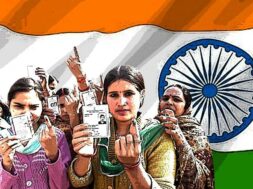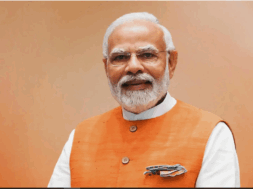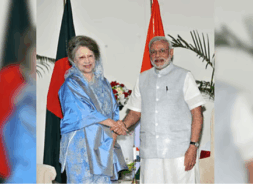
Elections: As Indian democracy blossoms, women voters to outnumber men in 2029
Virendra Pandit
New Delhi: Women voters are projected to outnumber men voters in 2029, according to a report from the SBI Economic Research Department (ERD).
As the nation heads to the scheduled Lok Sabha elections in mid-2024, the total voter turnout at the current rate of polling can touch 68 crores, of which 49 percent are likely to be women.
Women voters outnumbering men in 2029 would be an inflection point, a testimony to females getting their due share on socio-economic fronts. It would be a harbinger of harmonized growth, ERD said.
And as India advances to celebrate the centenary of Independence in 2047, women might leave men far behind. According to its projection, in 2047 (probable election year 2049), women’s voter turnout should increase to 55 percent and men’s voter turnout might fall to 45 percent.
The ERD observed that universal suffrage seems to have reached an inflection point since 2014 going by the quantum jump in the percentage of women voters.
“In 2014, the voter turnout increased by a whopping 13.7 crore to 55 crore of which 26 crore were women. It was 5.5 times higher than the average voter turnout between 1962 and 2009. The same was 5.8 times for women and 5.2 times for men. In 2019, the voter turnout further increased to 62 crore, of which 30 crore were women,” said Soumya Kanti Ghosh, Group Chief Economic Adviser, SBI.
In 2024, total voter turnout at the current rate of polling could touch 68 crores, of which women voters could be at 33 crores or 49 percent.
In 2029, total voter turnout at the current rate of polling could touch 73 crores, of which women voters at 37 crores might outstrip registered men voters at 36 crores / more than 50 percent of registered voters, the ERD said in a special report.
Also, the historic and bold step of ensuring one-third reservation to women in the Lok Sabha and the State Assemblies would go a long way in ensuring that policy-making at the highest levels promotes women-centric entrepreneurship 2.0, cutting across multiple barriers as the Top-Down approach makes local women more vocal across the nation.
The ERD emphasized that the contribution of women to the economy is always underestimated. “Basis NSS data, our analysis indicates that the total contribution of unpaid women to the economy comes to around Rs. 22.7 lakh crore (Rural: Rs. 14.7 lakh crore and Urban: Rs. 8.0 lakh crore) which is almost 7.5 percent of India’s GDP.
“Interestingly, there is a renewed resurgence of the innate strength and stakeholding of women across the country, duly anchored by bold and pragmatic policy measures with visibility rising handsomely in electoral and voting patterns too, an area dominated by men until now.
“There seems to be a big revolution on the cards; women’s share is increasing in all the Government-sponsored schemes, data shows,”
The report cited the implementation of the “Madhya Pradesh MukhyaMantri Ladli Behna Yojana” as a prime example of women empowerment. This scheme provides financial endowment to women in the 21-60 age group to improve the health and nutritional status of women and children dependent on them, nudging women to be financially more independent and to have freedom in tune with their priorities.
“We understand the Ladli Behna scheme is a culmination of the multiple micro empowerment schemes initiated by the Central Government at population scale which have brought a tectonic shift in the ecosystem,” the report said.
“…We estimate that one percentage point increase in the marginalized women targeted (receiving benefits of Ladli Behna), has increased the district-wise electoral success rate of the incumbent party by 0.36 percent. Juxtaposing such into a district-wise electoral success rate, it can be said that every 1 in 8 constituency, on average, had a favorable outcome (pro-incumbency) due to Ladli Behna / 30-35 seats in at least 8 districts,” Dr. Ghosh said.
Furthermore, a one percent increase in the target of such marginalized women in a district has resulted in a 0.04 percent increase in additional female voter turnout in 2023.
“Thus, around 70 percent (~3.67 lakhs) of additional female voters (~5.25 lakh) in 2023 MP elections voted are primarily attributable to Ladli Behna scheme…28 percent success rate in 2018 of the incumbent party in closely contested seats turned into 100 percent in 2023,” he added.














